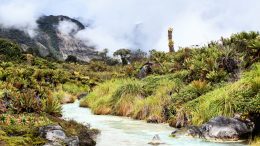On a recent, pre-pandemic journey to the High Andes of Colombia, I found myself surrounded by one of the region’s emblematic species, the flowering shrubs known locally as frailejones or “big monks.” These giant plants, relatives of sunflowers from the Espeletia genus, mesmerized me, their yellow buds and silvery hairs glistening in the intense, ephemeral sunlight.
Looking out over the vast, rolling landscape, I wondered how such a stunning, incomparable ecosystem can be taken for granted.
I’d accompanied National University of Colombia agricultural scientist Jairo Cuervo, that day, to Sumapaz — about 25 miles (40 km) southwest of Bogotá — to better understand the impacts of an expanding agricultural frontier on rich páramo soils.
Sumapaz is the world’s largest páramo — a type of high-altitude moorland ecosystem found in the South and Central American neotropics that functions as a sort of sponge, efficiently absorbing and storing rainwater and moisture into its vegetation and rich soils. The water is then released slowly and steadily, which is particularly important in dry seasons. Sumapaz and the nearby Chingaza páramo, for example, provide most of the water for the entire Bogotá savanna.
Páramos, experts say, may also serve as a sort of buffer against climate-change-induced recession of tropical mountain glaciers and extended droughts — if we can protect them.
Cuervo pointed to a potato farm and some grazing cows in the distance, where they’d taken over from the native vegetation. “Despite the páramo providing us with water to live, they are largely forgotten, neglected and at terrible risk,” he says.
Agriculture is just one of many interconnected pressures threatening these unique ecosystems and the people and wildlife who depend on them.
High Risk in the High Andes
In an exquisitely diverse country, no ecosystem is as unique and directly integrated into the health and well-being of Colombian society as the High Andean páramo.
Some of Colombia and Ecuador’s major rivers also rise in the páramos, and large cities such as Bogotá, Medellin and Cali in Colombia and Quito in Ecuador are almost completely dependent on them for their water supplies. Tens of millions of people in the region rely on the páramo ecosystem for drinking water and a range of agricultural and industrial activities — including an estimated 70% to 80% of the Colombian populace.
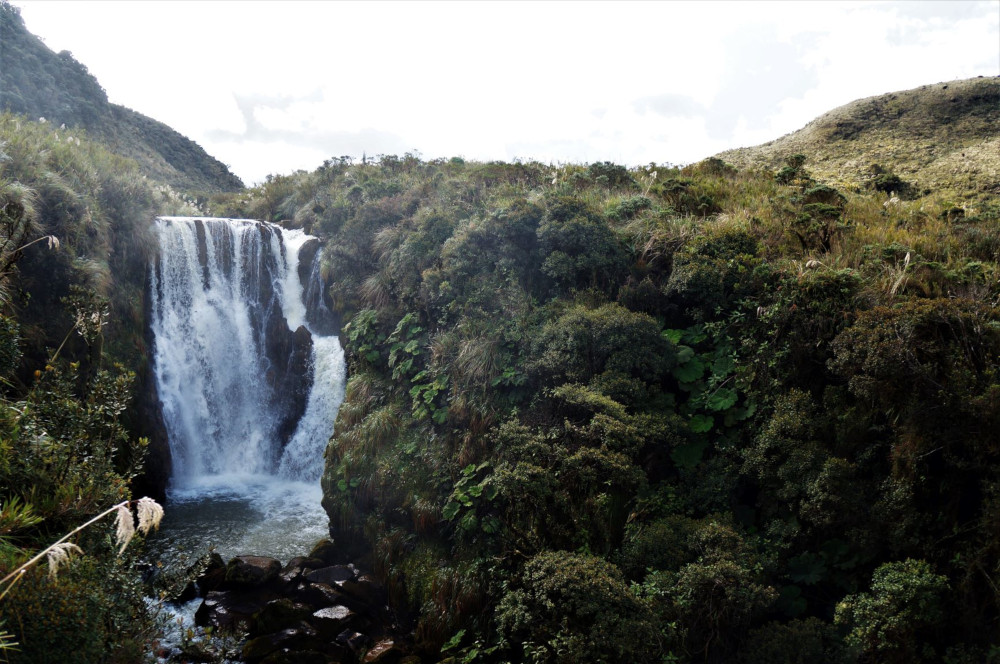
These “water towers,” as they’re commonly known, are also one of the world’s most rapidly evolving ecosystems.
“Páramos are a hotspot within a global hotspot, as they’re located mostly within the threatened tropical Andes,” says Santiago Madriñan, a botanist from the Universidad de los Andes and an expert on páramos.
In an influential 2013 study, Madriñan and his team made the claim that páramos are the planet’s coolest and fastest evolving biodiversity hotspots, a conclusion established through genetic analysis of páramo plant species and comparison to other rapidly evolving biodiversity hotspots, such as the Mediterranean Basin, the Hawaiian Archipelago and the California Floristic Region. Some analogous processes being uncovered in parts of the Tibetan Plateau may give the páramos competition to this “hotspot of all hotspots” claim, but even so the páramos are undoubtedly special.
“The páramo, like the famed Galápagos Islands, are like a laboratory for studying the process of evolution,” Madriñan says. “We can learn how these species adapted to changing climatic conditions over a relatively short period of geological time. The páramo only came into existence within the last 2 to 3 million years, at which time uplift of the Northern Andes mountains rose above the tree line.”
For extended periods, especially during past glacial periods, páramo ecosystems remained more connected and evolved more uniformly at lower altitudes within mountain valleys due to a lower tree line. Since then, they’ve shrunk dramatically, while their evolutionary potential has practically exploded.
“The ensuing warmer epochs such as our present Holocene disconnected and isolated páramo complexes, creating ‘sky islands’ with very high species diversification and endemism,” explains Madriñan. “Most of the more than 3,000 plant species so-far discovered are highly specialized to the extreme conditions of the páramo.” These conditions include powerful ultraviolet radiation, drastic day-night temperature swings and abrupt changes in weather.

And páramos are not only rich in plant life. They contain hundreds of endemic and threatened bird, reptile, amphibian, insect and mammal species, including the majestic Andean condor (Vultur gryphus) and spectacled bear (Tremarctos ornatus).
Rising Temperatures Threaten Páramos
While páramos serve as a buffer against climate change and water scarcity, they’re threatened by rapidly rising temperatures themselves — as are the plants and animals that live there.
The high altitude, isolation and specialization of many species limits their so-called “adaptive capacity” and ability to migrate upwards.
“There is no time or space to adapt to present trends of rising temperatures for many of the páramo plant species, including the Espeletias,” says Madriñon, who co-authored a recent study that showed Espeletias’ vulnerability to climate change. “They will be pushed out of existence.”
Rising temperatures in the páramo are also bringing some unwelcome guests.
“With climate change, insects often migrate upwards much faster than other species,” says Thomas Walschburger, a conservation biologist and science coordinator for TNC-Colombia. “There are some species arriving in the páramo ecosystem, such as beetles, caterpillars and other potential pests, that can have an unwanted impact, including on the frailejones. It’s unknown if the frailejones will have the time and ability to adapt to their presence.”
Climate change may also bring increased risk of fires within the páramos. Research has shown that fires in the páramo are mostly of human origin, sparked to clear vegetation and create open grassland. The higher temperatures and potentially drier conditions under climate change will make these fires both easier to start and harder to control. In February 2020 a massive fire burned at least 11 square miles (30 square km) in Sumapaz. The flames were bad enough to mobilize Colombia’s Disaster Risk Management Agency and cause air-pollution alerts in nearby Bogotá.
This isn’t just a local or regional problem. The waterlogged páramo soils are rich in organic matter and extremely dense in carbon, on the range of 0.2 – 1.4 tons per hectare, depending on depth. Scientists say the loss of the páramos’ carbon storage capacity will likely lead to a net-release of carbon into the atmosphere, contributing to global climate change.
Encroaching Mining and Agriculture
Other threats continue to chip away at páramo ecosystems.
Legal loopholes are at the center of ongoing conflicts regarding hundreds of mining concessions granted within and around the páramos in Colombia. The ecosystems are supposed to be protected by law from such extractive activities, but that has done little to deter the ambitions of shortsighted corporations looking to exploit their mineral wealth.
Nowhere has this battle been more contentious than Minesa’s massive gold-mining concession within and around the Santurbán páramo, in Colombia’s Santander department.
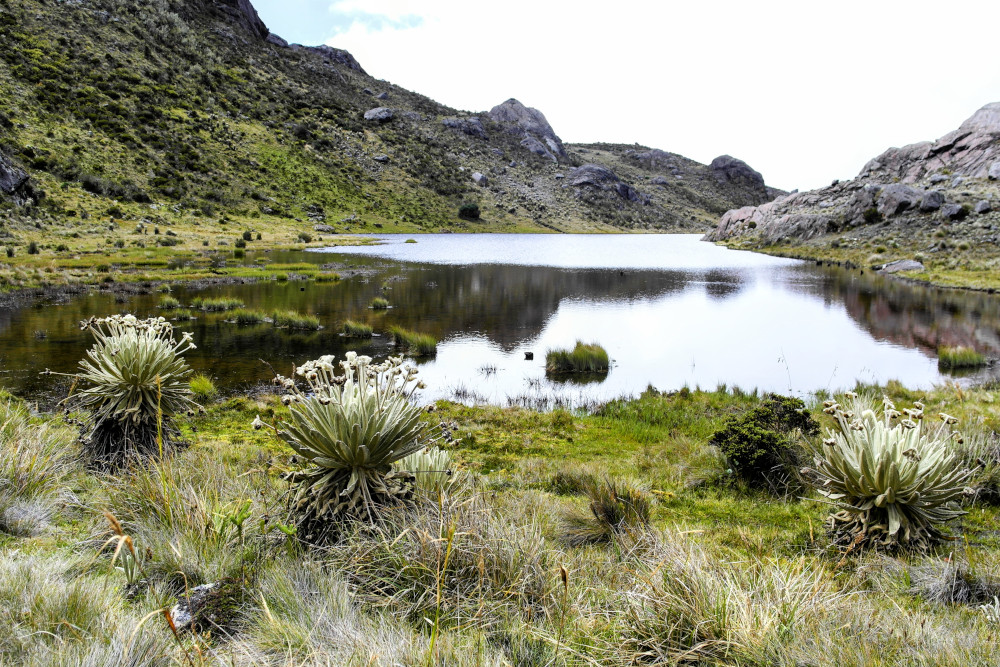
In a 2018 letter for Science, Madriñan and 13 other highly regarded researchers from around the world emphasized that the protection of biodiverse páramos and Andean forests has been largely neglected in Colombia. They wrote:
“We urge environmental authorities to take the necessary action to stop the Santurbán [Minesa] goldmining project and instead promote the active preservation and restoration of the páramos and Andean forests, particularly in this biologically important area of the country.”
Today the decades-long struggle over Santurbán continues, thanks to strong local and national resistance fortified by researchers who enforce the socioecological importance of páramos.
Meanwhile the rapidly expanding high-Andean agricultural frontier, particularly for cow pastures and potato farming, poses perhaps the most tangible and immediate threat to páramos. Cow grazing requires large swaths of grassland and ruins páramo soil quality, while potato farmers drain bogs and often intensively deploy agrochemicals.
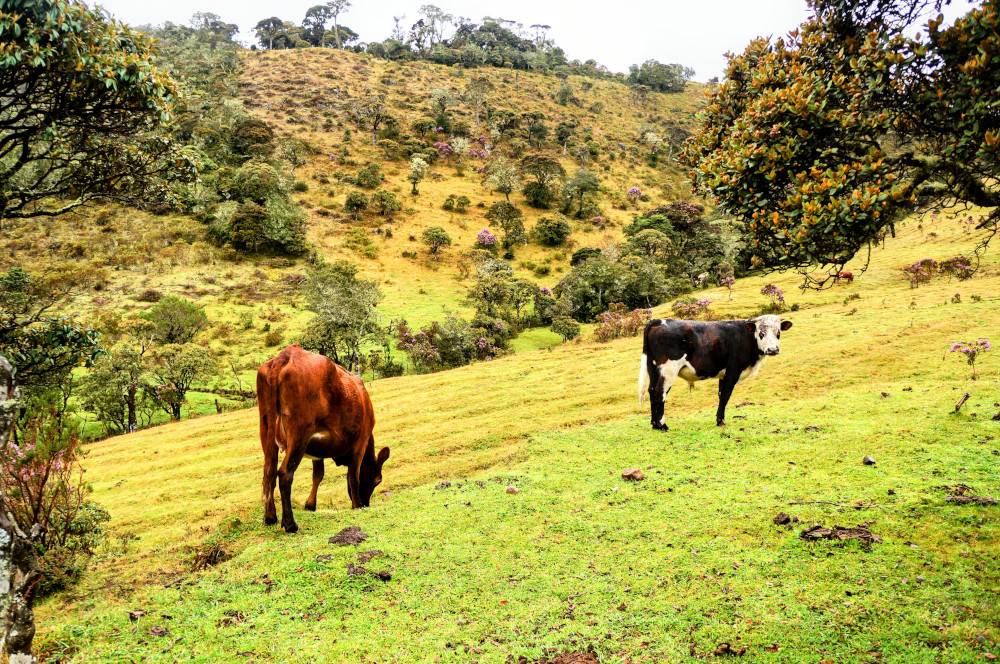
“With cattle, their weight compacts this naturally sponge-like soil, so if cattle grazing becomes even more extensive in the páramos, it could lead to the loss of the páramos’ vital function of efficient water absorption and slow release,” explained Jairo Cuervo while we were in the Sumapaz páramo. “There would also be increased runoff, soil erosion and flood risk, accompanied by decreased water quality that is exacerbated by agrochemical use for expanding potato cultivations in the páramos and subpáramos.”
The Challenge of Delimiting and Protecting the Páramo
The success of conservation efforts and attempts to limit the expansion of mining and agriculture into páramos will depend greatly on one critical element: maps.
But delimiting individual páramos and the entire global area of páramo, which exist at altitudes between the tree line and the snow line, is no easy task.
A widely cited statistic for the global páramo area estimates them at 13,500 square miles (35,000 square km), and within this estimate, more than half of the páramo area (7,300 square miles, or 19,000 square km) is within Colombia’s delimited páramo complexes. But that may leave a lot of these ecosystems unrecognized and unprotected.
“The most current accepted area of páramo in Colombia is around 3 million hectares [11,500 square miles],” said Brigitte Baptiste, a Colombian biologist and the former director of the Humboldt Institute, the entity responsible for delimiting Colombia’s páramos.
The remaining páramo is found in parts of Peru, Ecuador, Venezuela and Costa Rica.
What holds back efforts to draw more conclusive lines around the páramos? “I think the top challenges for the delimitation are not technical but social,” says Baptiste. “There are different ways of dealing with physical and biological issues by local people as well as by institutions and at other scales. Therefore it’s quite difficult to get an agreement about where to draw the line, and to get a science policy process in place which allows us to negotiate this definition.”
Regardless of the challenges, it is critical that the páramos’ limits be properly defined if they’re to be conserved. “The effects of páramo delimitation are clear: no mining, no agriculture, within the accepted legal area of páramo,” says Baptiste.
The Need for Socio-Ecological Balance
There are clearly conflicting interests among farming communities living within or around the páramo, mining companies looking to exploit the region, researchers enthralled by the unique ecosystem, and the multitude downstream who depend on páramos for water.
It wasn’t always this out of balance between humans and the páramo.
Indigenous peoples such as the Muisca lived in harmony with and worshipped the páramo for thousands of years, before their lands were stolen and cultures destroyed. Today some resilient Indigenous peoples remain and continue to protect the vital sacred páramo.
“The páramo is the originator of life and connects us to our ancestors. It should never be mined, burned, grazed or cultivated, as many shortsighted people do today,” Nasa leader Maria Pito told me in November 2019 from within the Pisxnu Páramo in Cauca, Colombia.
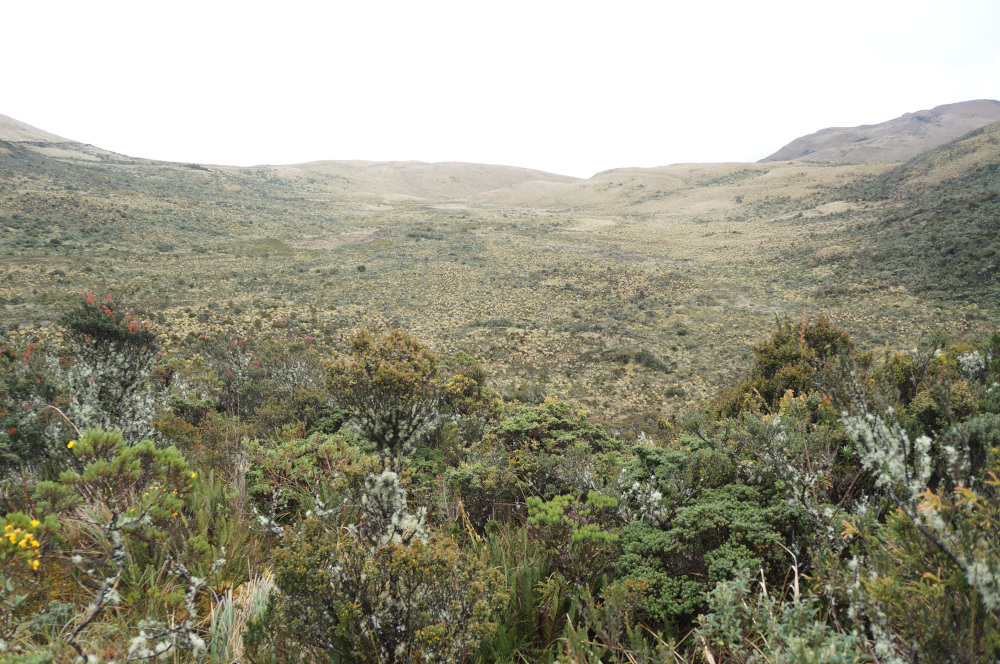
Science is just starting to catch up with holistic traditional knowledge by providing data-driven socio-ecological reasons for protecting these ecosystems. For example, integrated modeling of the páramos’ complex and still largely unknown hydrological processes by the Stockholm Environmental Institute in Colombia, Ecuador and Peru has uncovered some important trends. It’s a difficult task, as researcher Cristo Pérez explained to me: “To properly model the páramos’ hydrology, one must account for the dynamic interplay between large amounts of groundwater, surface water, precipitation and the many rivers born in the páramos.”
But that complex hydrology is already suffering, and the problems are expected to get worse. In a 2016 SEI study of Peru’s Quiroz-Chipillico watershed, the authors concluded: “As expected, the model showed that rising temperatures and reduced precipitation would affect water availability. But land use change — specifically, the conversion of páramo to new uses and degradation of the páramo — had an even greater effect.” These projections further enforce that water availability will decrease not just for local communities and biodiversity, but for millions of people and ecosystems downstream.
The Time for Coordinated Action
The experts I spoke with all agreed that the interconnected pressures of climate change and human land use pose an existential threat to the páramos. Climate change will both directly affect specialized páramo species and will make the clearing of their vegetation by fire more common and efficient. As fires clear more land, cow pastures and potato cultivations will reach progressively higher altitudes within the páramos unless there are stronger efforts to limit their expansion. This, in turn, will further degrade soils and affect species’ ability to adapt and migrate.
Then there’s the question of water. Some research suggests that upward-migrating Andean forests may help to fill part of the dynamic hydrological function left by the disappearing páramos, but not if those lands are simply cleared for human activities.
“Maybe some of the water regulation can be made by High Andean forest, but we don’t know for sure as there would be changes to the structure and composition of water-retaining páramo soils,” says Walschburger. “Regardless, the impacts on biodiversity will be terrible if the páramo disappears.”
My own time in the páramos working with Indigenous peoples and a diverse spectrum of researchers has often given me the opportunity to venture alone to absorb the tranquility, complexity and breathtaking biodiversity of this neglected high-altitude paradise. These experiences have instilled in me that the páramos are an irreplaceable ecosystem in need of the highest levels of local, regional and global protection.
Whether they’re a vital source of water for tens of millions of people, megadiverse “sky islands” that can serve as a laboratory for the study of endemic species and evolutionary biology, buffers against climate change, or a sacred and awe-inspiring source of biocultural heritage, their loss would be an irreparable tragedy for both the region and the planet.
![]()

